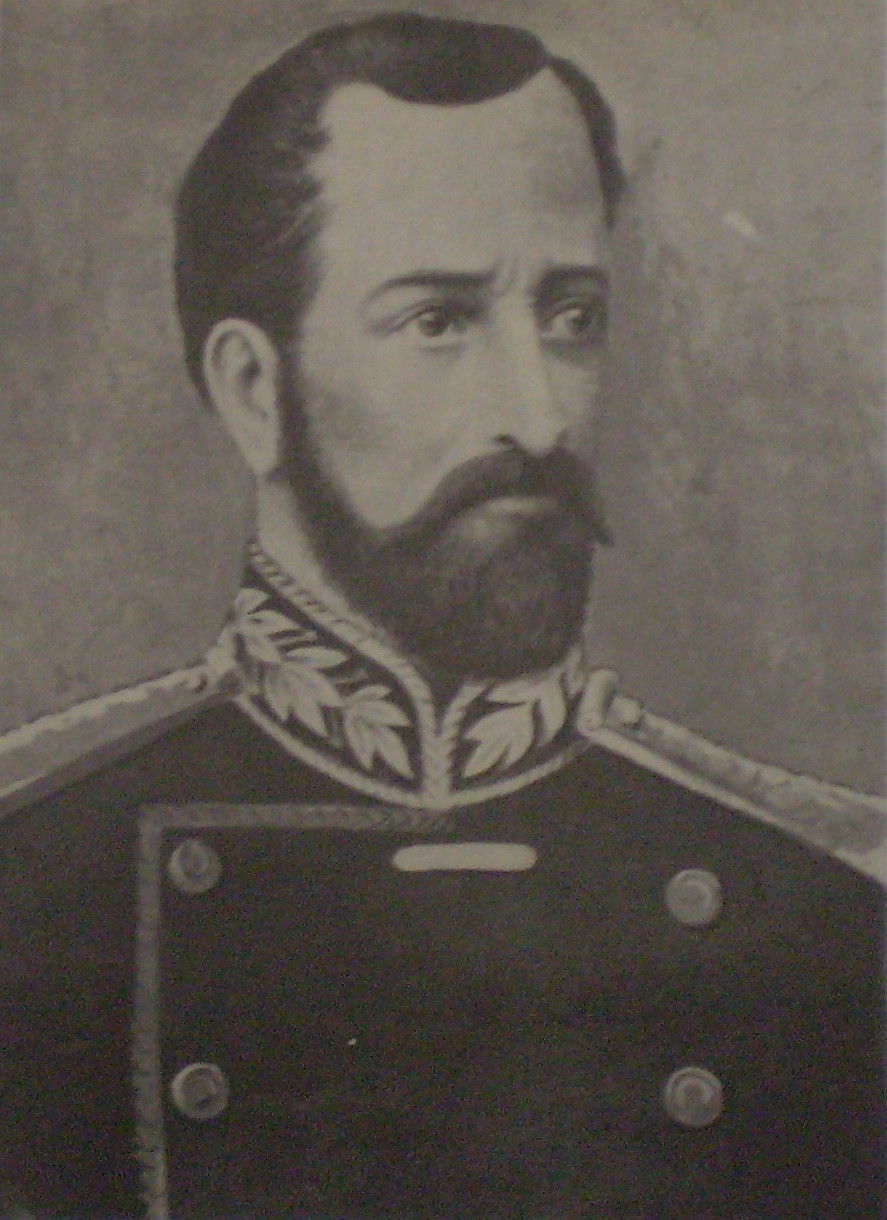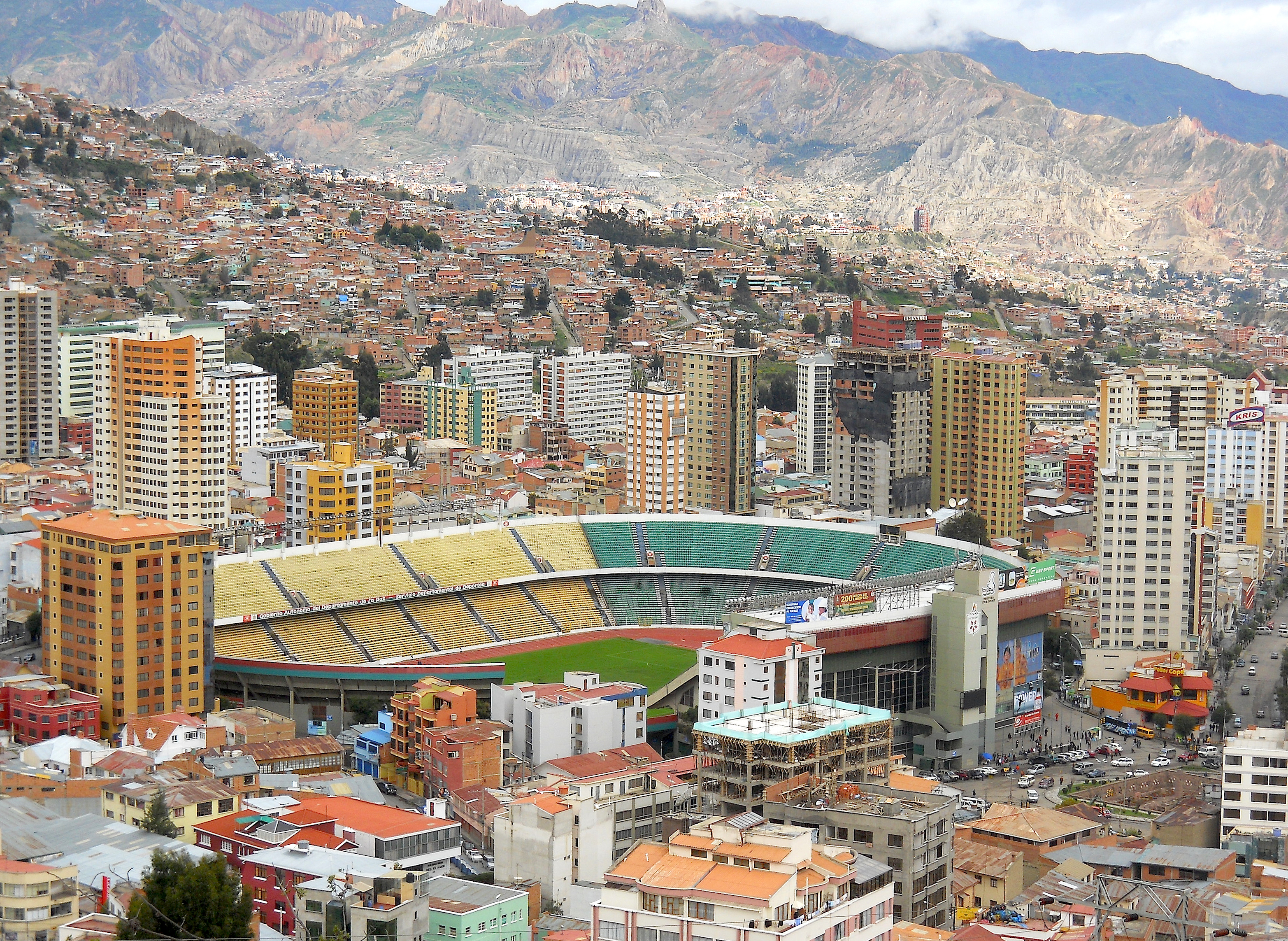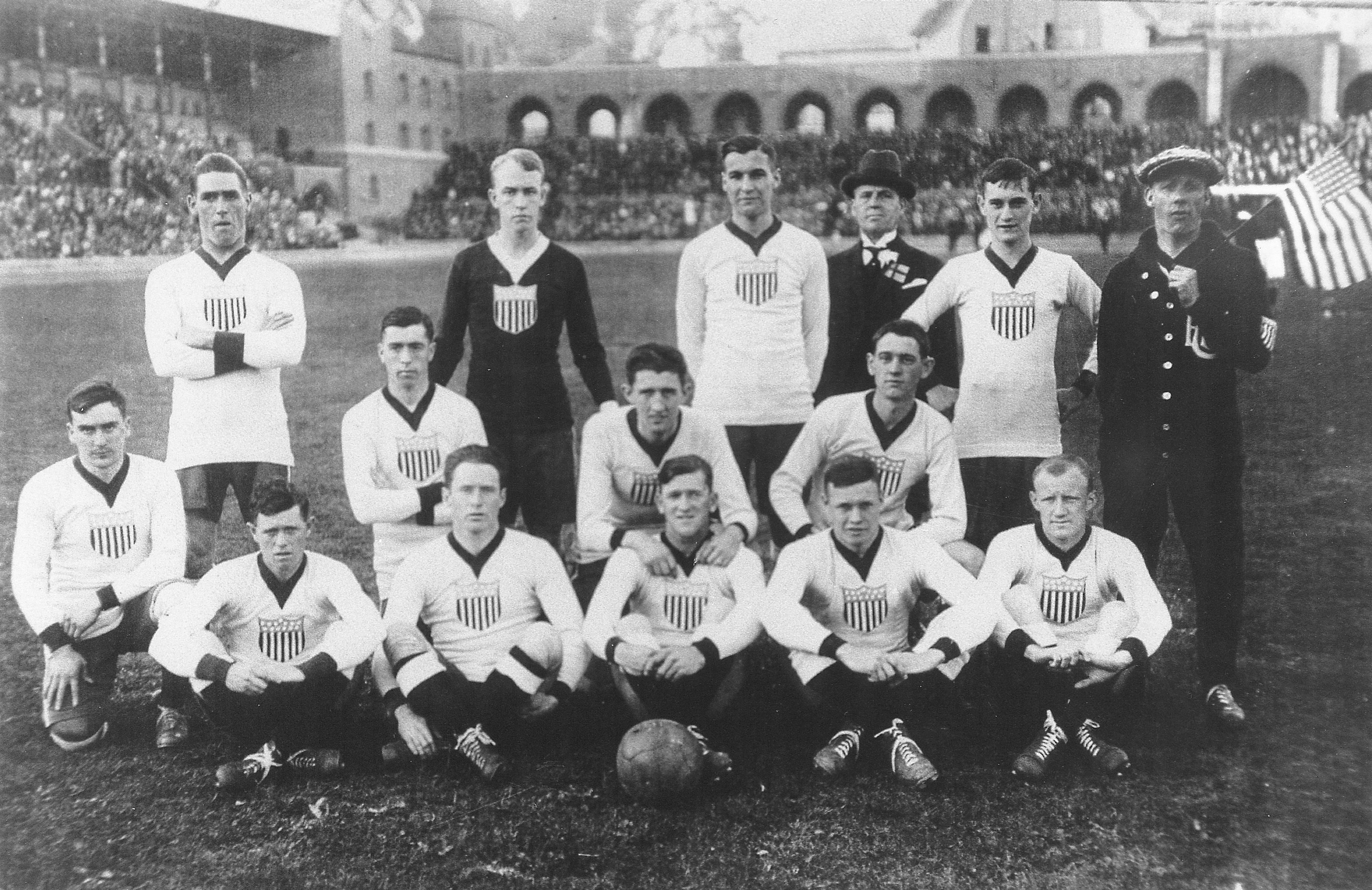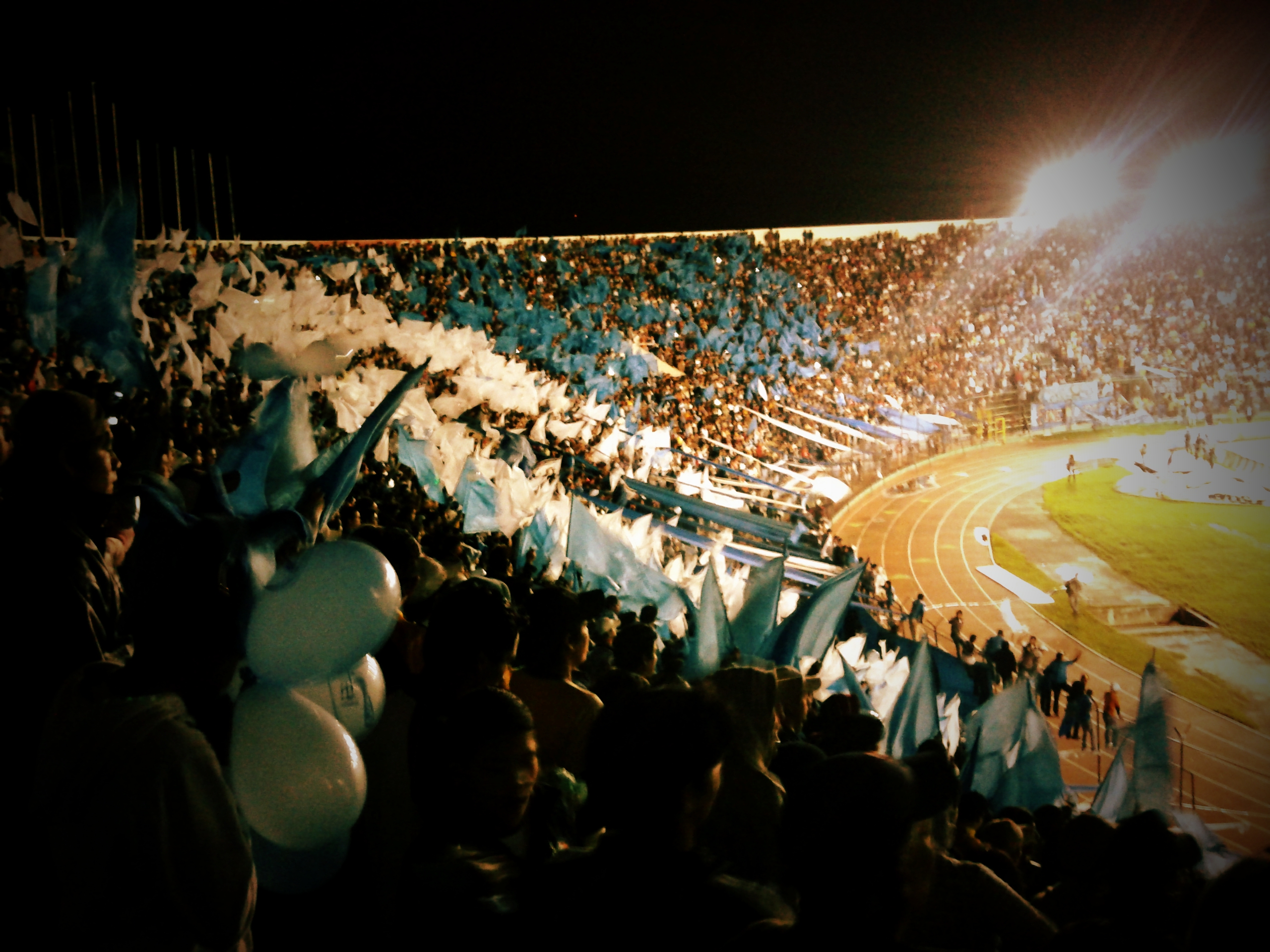|
Ronald Raldes
Ronald Raldes Balcázar (born April 20, 1981) is a Bolivian former professional footballer who played as a centre-back. He is the first Bolivian player in history to reach 100 international appearances. Club career Raldes was born in Santa Cruz de la Sierra. He started his career with Club Destroyers in 1998, the following year he joined Oriente Petrolero, where he was part of the Bolivian League Championship winning team in 2001. Due to his high performance displayed with Oriente Petrolero and the Bolivia national team, Raldes was signed by Argentine club Rosario Central in 2003. In 2008, and after five great years with the ''canallas'', Raldes announced his imminent departure from the institution once the Torneo Clausura ended in mid June. Not long after, he signed for Saudi Arabian club Al-Hilal. On March 20, 2009, he joined Mexican side Cruz Azul. He made his debut on April 22, 2009, against Atlante, in the first-leg match of the CONCACAF Champions League finals. After on ... [...More Info...] [...Related Items...] OR: [Wikipedia] [Google] [Baidu] |
Santa Cruz De La Sierra
Santa Cruz de la Sierra (; "Holy Cross of the Mountain Range"), commonly known as Santa Cruz, is the largest city in Bolivia and the capital of the Santa Cruz department. Situated on the Pirai River in the eastern Tropical Lowlands of Bolivia, the Santa Cruz de la Sierra Metropolitan Region is the most populous urban agglomeration in Bolivia with an estimated of 2.4 million population in 2020, it is formed by a conurbation of seven Santa Cruz municipalities: Santa Cruz de la Sierra, La Guardia, Warnes, Cotoca, El Torno, Porongo, and Montero. The city was first founded in 1561 by Spanish explorer Ñuflo de Chavez about east of its current location, and was moved several times until it was finally established on the Pirai River in the late 16th century. For much of its history, Santa Cruz was mostly a small outpost town, and even after Bolivia gained its independence in 1825 there was little attention from the authorities or the population in general to settle the regio ... [...More Info...] [...Related Items...] OR: [Wikipedia] [Google] [Baidu] |
Captain (association Football)
The team captain of an association football team, sometimes known as the skipper, is a team member chosen to be the on-pitch leader of the team; they are often one of the older or more experienced members of the squad, or a player that can heavily influence a game or has good leadership qualities. The team captain is usually identified by the wearing of an armband. Responsibilities The only official responsibility of a captain specified by the Laws of the Game is to participate in the coin toss prior to kick-off (for choice of ends or to have kick-off) and prior to a penalty shootout. Contrary to what is sometimes said, captains have no special authority under the Laws to challenge a decision by the referee. However, referees may talk to the captain of a side about the side's general behaviour when necessary. At an award-giving ceremony after a fixture like a cup competition final, the captain usually leads the team up to collect their medals. Any trophy won by a team wil ... [...More Info...] [...Related Items...] OR: [Wikipedia] [Google] [Baidu] |
Valparaíso
Valparaíso (; ) is a major city, seaport, naval base, and educational centre in the commune of Valparaíso, Chile. "Greater Valparaíso" is the second largest metropolitan area in the country. Valparaíso is located about northwest of Santiago by road and is one of the Pacific Ocean's most important seaports. Valparaíso is the Capital city, capital of Chile's second most populated administrative region and has been the headquarters for the Chilean Navy since 1817 and the seat of the National Congress of Chile, Chilean National Congress since 1990. Valparaíso played an important geopolitical role in the second half of the 19th century when it served as a major stopover for ships traveling between the Atlantic and Pacific oceans by crossing the Straits of Magellan. Valparaíso experienced rapid growth during its golden age, as a magnet for European immigrants, when the city was known by international sailors as "Little San Francisco" and "The Jewel of the Pacific". Notable inhe ... [...More Info...] [...Related Items...] OR: [Wikipedia] [Google] [Baidu] |
Estadio Elías Figueroa Brander
Estadio Elías Figueroa Brander (), formerly known as ''Estadio Regional Chiledeportes'' and ''Estadio Municipal de Valparaíso'', is a multi-purpose stadium in Valparaíso, Chile. It is commonly known as Estadio Playa Ancha, due to the suburb where it is located. It is currently used mostly for football matches and is the home stadium of Santiago Wanderers. The stadium holds 20,575, was built in 1931''Stadiums in Chile'' . worldstadiums.com and renovated in 2014. The highest attendance at the Elías Figueroa, then "Municipal de Valparaiso", was 23,109 for a Primera Division league match between and |
Exhibition Game
An exhibition game (also known as a friendly, a scrimmage, a demonstration, a preseason game, a warmup match, or a preparation match, depending at least in part on the sport) is a sporting event whose prize money and impact on the player's or the team's rankings is either zero or otherwise greatly reduced. In team sports, matches of this type are often used to help coaches and managers select and condition players for the competitive matches of a league season or tournament. If the players usually play in different teams in other leagues, exhibition games offer an opportunity for the players to learn to work with each other. The games can be held between separate teams or between parts of the same team. An exhibition game may also be used to settle a challenge, to provide professional entertainment, to promote the sport, to commemorate an anniversary or a famous player, or to raise money for charities. Several sports leagues hold all-star games to showcase their best players ... [...More Info...] [...Related Items...] OR: [Wikipedia] [Google] [Baidu] |
La Paz
La Paz (), officially known as Nuestra Señora de La Paz (Spanish pronunciation: ), is the seat of government of the Plurinational State of Bolivia. With an estimated 816,044 residents as of 2020, La Paz is the third-most populous city in Bolivia. Its metropolitan area, which is formed by La Paz, El Alto, Achocalla, Viacha, and Mecapaca makes up the second most populous urban area in Bolivia, with a population of 2.0 million, after Santa Cruz de la Sierra with a population of 2.3 million. It is also the capital of the La Paz Department. The city, in west-central Bolivia southeast of Lake Titicaca, is set in a canyon created by the Choqueyapu River. It is in a bowl-like depression, part of the Amazon basin, surrounded by the high mountains of the Altiplano. Overlooking the city is the towering, triple-peaked Illimani. Its peaks are always snow-covered and can be seen from many parts of the city. At an elevation of roughly above sea level, La Paz is the highes ... [...More Info...] [...Related Items...] OR: [Wikipedia] [Google] [Baidu] |
Estadio Hernando Siles
Estadio Hernando Siles is a multi-purpose stadium in La Paz, Bolivia. It is the country's largest stadium, with a capacity of 41,143 seats. It is named after Hernando Siles Reyes, the 31st President of Bolivia (1926–1930). The stadium is located in the Miraflores borough of La Paz, at an altitude of 3,637 metres (11,932 feet) above sea level, making it one of the highest professional stadiums in the world. Opened in 1930, it is the home ground of three major Bolivian league football clubs; Club Bolívar, The Strongest and La Paz F.C., as well as several smaller top sides: Universitario de La Paz, Chaco Petrolero and Mariscal Braun. The stadium also hosts lower league clubs: Fraternidad Tigres and Academia de Balompié Boliviano. History The stadium was officially opened on 16 January 1930 with a match between The Strongest and its classic rival, Universitario, with The Strongest winning 4–1. The stadium hosted some games of the 1963 South American Championship, which ... [...More Info...] [...Related Items...] OR: [Wikipedia] [Google] [Baidu] |
United States Men's National Soccer Team
The United States men's national soccer team (USMNT) represents the United States in men's international soccer competitions. The team is controlled by the United States Soccer Federation and is a member of FIFA and CONCACAF. The U.S. team has appeared in eleven FIFA World Cups, including the first in 1930, where they reached the semi-finals to finish third, the best result ever by a team from outside UEFA and CONMEBOL. They returned in 1934 and 1950, defeating England 1–0 in the latter, but did not qualify again until 1990. As host in 1994, the U.S. received an automatic berth and lost to Brazil in the round of sixteen. They qualified for the next five World Cups (seven consecutive appearances (1990–2014), a feat shared with only seven other nations), becoming one of the tournament's regular competitors and often advancing to the knockout stage. The U.S. reached the quarter-finals in 2002, and controversially lost to Germany. In the 2009 Confederations Cup, the A ... [...More Info...] [...Related Items...] OR: [Wikipedia] [Google] [Baidu] |
FIFA World Cup Qualification
The FIFA World Cup qualification is a competitive match that a national association football team takes in order to qualify for one of the available berths at the final tournament of the (men's) FIFA World Cup. Qualifying tournaments are held within the six FIFA continental zones, each organized by their respective confederations: AFC (Asia), CAF (Africa), CONCACAF (North and Central America and the Caribbean), CONMEBOL (South America), OFC (Oceania), and UEFA (Europe). For each World Cup, FIFA decides the number of places in the finals allocated to each of the zones, based on the numbers and relative strengths of the confederations' teams. As a courtesy, the host receives an automatic berth selection, as has happened with the immediate past tournament winner during much of the competition's history. All other finalists are determined on a standalone qualifying round achievement without regard to previous achievements. History The berths for the inaugural 1930 tourname ... [...More Info...] [...Related Items...] OR: [Wikipedia] [Google] [Baidu] |
Julio César Baldivieso
Julio César Baldivieso Rico (born 2 December 1971) is a Bolivian football coach and former player who played as an attacking midfielder. Baldivieso was a midfielder who played for the Bolivia national team at the 1994 World Cup and several Copa Américas. Football career Club Nicknamed "El Emperador", Baldivieso began his career in his native Cochabamba playing for Wilstermann in 1987. His exquisite technique didn't go unnoticed and he signed with Bolivia's biggest football club, Bolívar in 1992. Thanks in part to the successful run with the national team, which qualified to the 1994 World Cup, he awoke the interest of several clubs outside Bolivia. After the World Cup, he transferred to Argentine team Newell's Old Boys from Rosario, where he played until the winter of 97. Subsequently, he joined J1 League club Yokohama Marinos for a couple of years. As his career progressed, Baldivieso also exposed his talent in diverse leagues around the world; such is the case of Barcel ... [...More Info...] [...Related Items...] OR: [Wikipedia] [Google] [Baidu] |
Guillermo Ángel Hoyos
Guillermo () is the Spanish form of the male given name William. The name is also commonly shortened to 'Guille' or, in Latin America, to nickname 'Memo'. People *Guillermo Amor (born 1967), Spanish football manager and former player *Guillermo Arévalo (born 1952), a Shipibo shaman and ''curandero'' (healer) of the Peruvian Amazon; among the Shipibo he is known as Kestenbetsa *Guillermo Barros Schelotto (born 1973), Argentine former football player *Guillermo Bermejo (born 1975), Peruvian politician * Guillermo C. Blest (1800–1884), Anglo-Irish physician settled in Chile *Guillermo Cañas, Argentine tennis player *Guillermo Chong, Chilean geologist *Guillermo Coria, another Argentine tennis player *Guillermo Dávila, Venezuelan actor and singer *Guillermo Díaz (actor) (born 1975), American actor of Cuban descent *Guillermo Diaz (basketball), Puerto Rican basketball player for the Los Angeles Clippers *Guillermo del Toro, Mexican filmmaker, screenwriter, producer, author, actor, ... [...More Info...] [...Related Items...] OR: [Wikipedia] [Google] [Baidu] |
1997 Copa América
Bolivia hosted the Copa América for the second time in its 38th edition. It was held from 11 to 29 June. It was organized by CONMEBOL, South America's football governing body. There is no qualifying for the final tournament. All South American countries (10 countries) participate, along with two more invited countries, making a total of 12 teams competing in the tournament. In the 1997 edition, Costa Rica and Mexico were the invitees. The tournament was won by Brazil, who became the first team to hold the Copa América and the World Cup at the same time, a feat they would repeat in 2004. Venues Squads For a complete list of participating squads: ''1997 Copa América squads'' Match officials Argentina * Horacio Elizondo Bolivia * René Ortubé * Juan Carlos Paniagua Brazil * Antônio Pereira Chile * Eduardo Gamboa Colombia * Rafael Sanabria Costa Rica * Rodrigo Badilla Ecuador * Byron Moreno Mexico * Antonio Marrufo Paraguay * Epifanio González ... [...More Info...] [...Related Items...] OR: [Wikipedia] [Google] [Baidu] |







